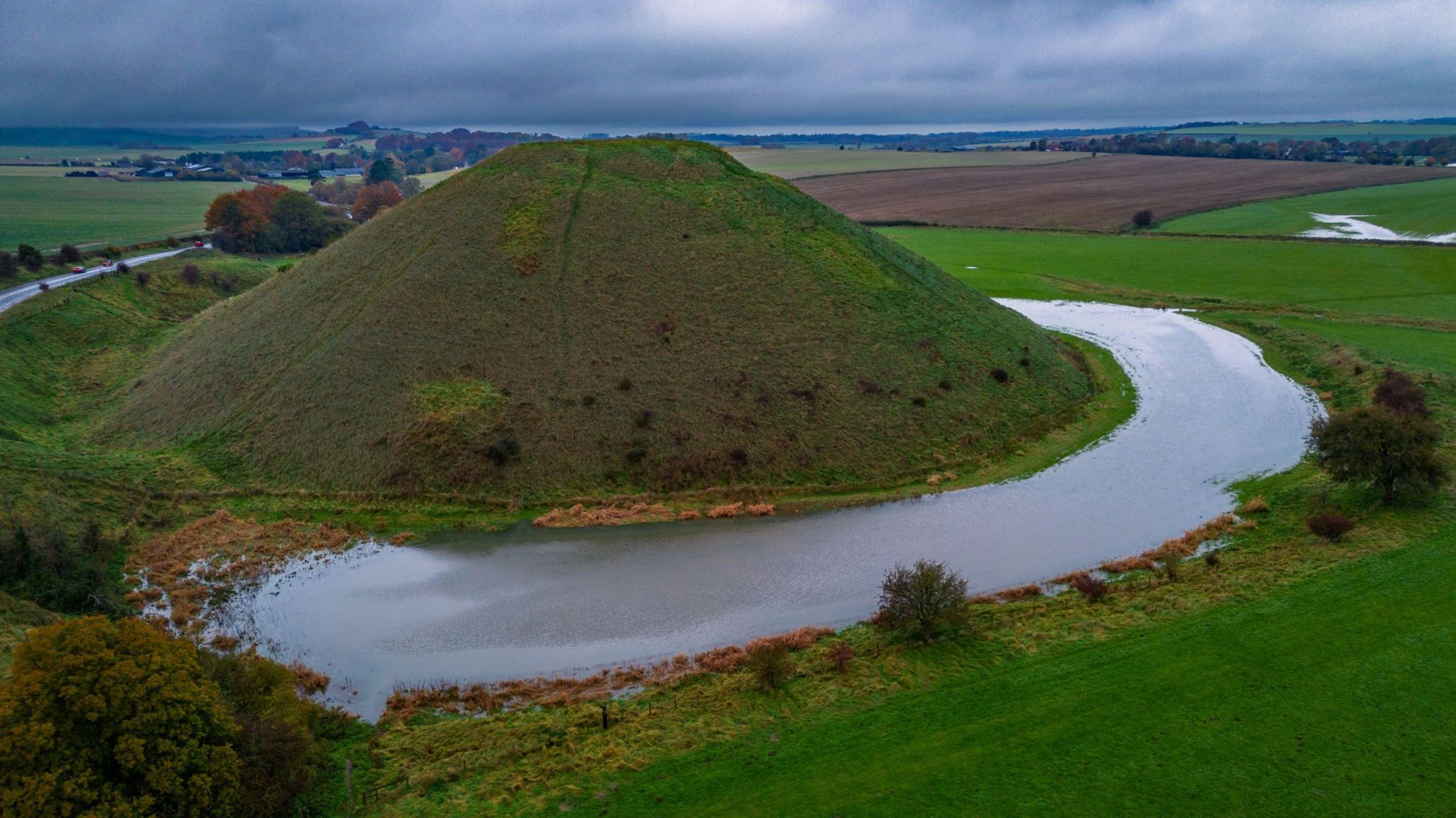Moat forms round ancient monument after heavy rain

Recent heavy rain has caused the ground surrounding Silbury Hill to become saturated, creating a horseshoe-shaped moat
At a glance
A moat formed around the base of the ancient monument after heavy rain.
The ground surrounding Silbury Hill near Avebury has become saturated, creating a horseshoe-shaped water-filled ditch.
English Heritage said the lake that forms seasonally around Silbury Hill is not a problem and drains away naturally.
- Published
A moat has formed around the base of an ancient monument in Wiltshire after heavy rain.
The ground surrounding Silbury Hill, external near Avebury has become very soft and saturated, creating a horseshoe-shaped water-filled ditch.
The 4,000-year-old chalk mound is part of the Avebury World Heritage Site, and a Site of Special Scientific Interest.
English Heritage's senior properties curator Win Scutt, said: "The lake that forms seasonally around Silbury Hill is not a problem and drains away naturally."
Flooding around the hill occurs at regular intervals, but English Heritage said the water was not a cause for concern.
Standing 40m (131ft) tall, Silbury Hill is the largest artificial prehistoric mound in Europe, probably built over a short period between about 2,479 and 2,350BC.
According to English Heritage, external, the purpose and significance of the monument remains unknown.
Flooding has occurred most recently in 2000, 2007 and 2013. However, the water has not been a cause for concern.
"It [the water] has appeared there for at least 4,000 years and was partly created by the digging of turf and chalk for the construction of the great mound," explained Mr Scutt.
The 4,000-year-old mound is part of the Avebury World Heritage Site, and a Site of Special Scientific Interest
Tim Daw, a local expert on ancient monuments, told BBC Radio Wiltshire: "Back when they built Silbury Hill and Avebury, researchers say, the water table was higher, perhaps two to five metres higher, so there would have been a lot more water about.
"So maybe we're actually seeing with this rain and higher ground level of water, because it's been a little bit damp, more what the original builders intended [the hill] to be like."
Mr Scutt added: "The water doesn't obstruct the viewing of the monument for the public.
"The best place to view Silbury Hill is from the adjacent car park where there is an interpretation panel."